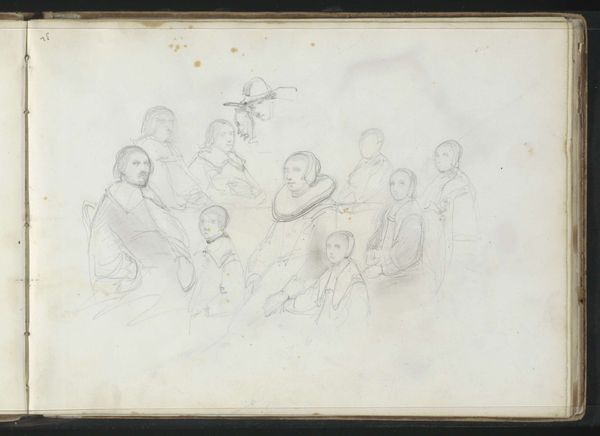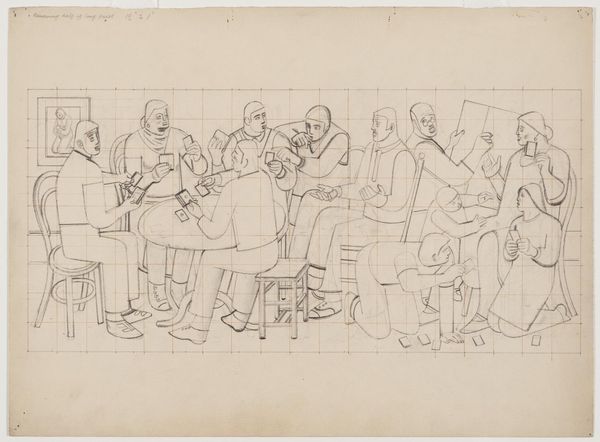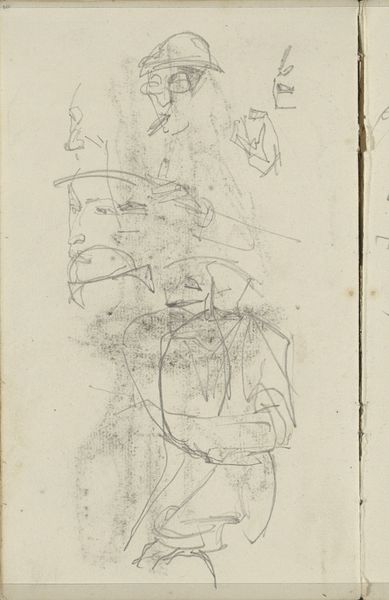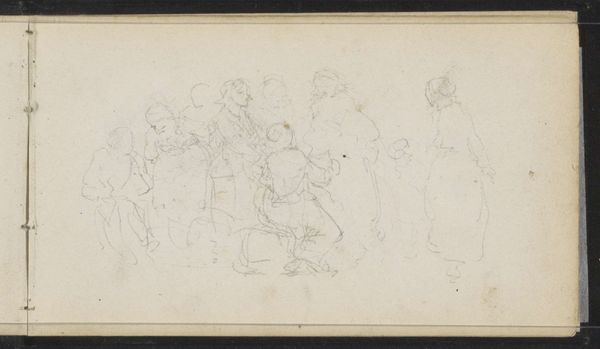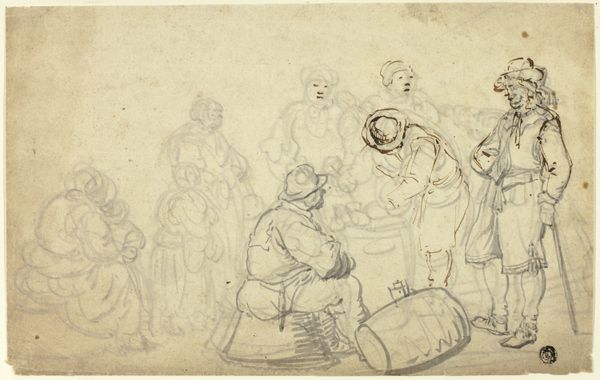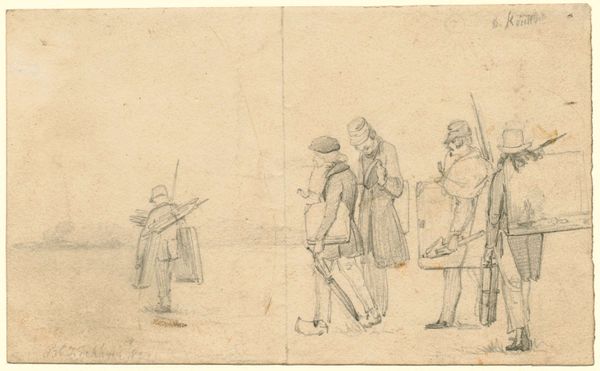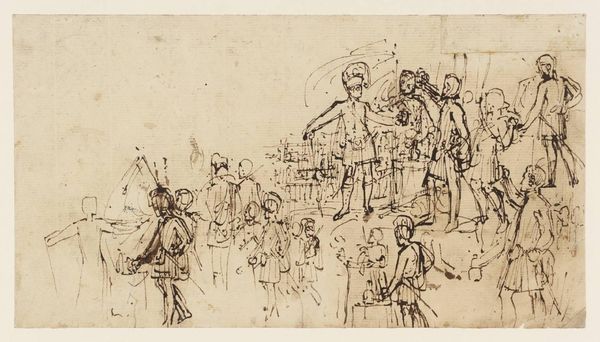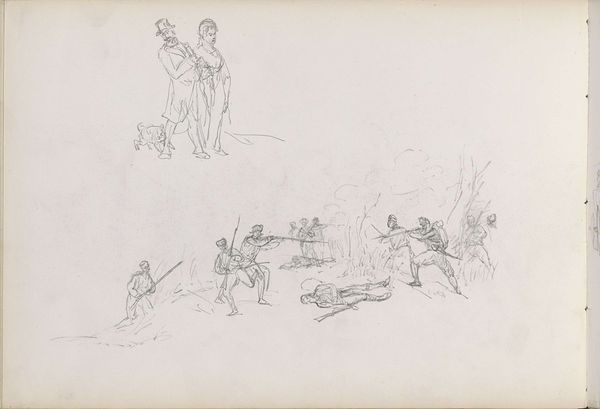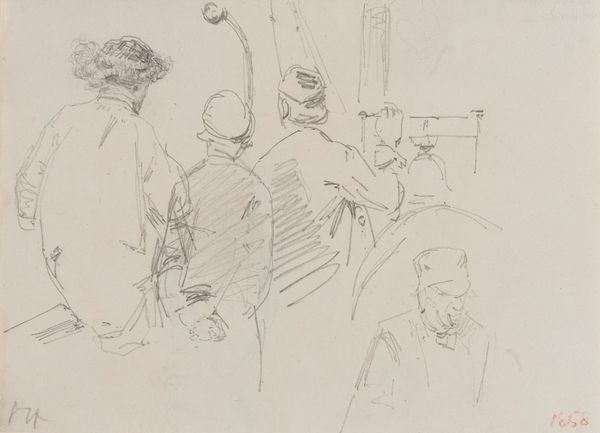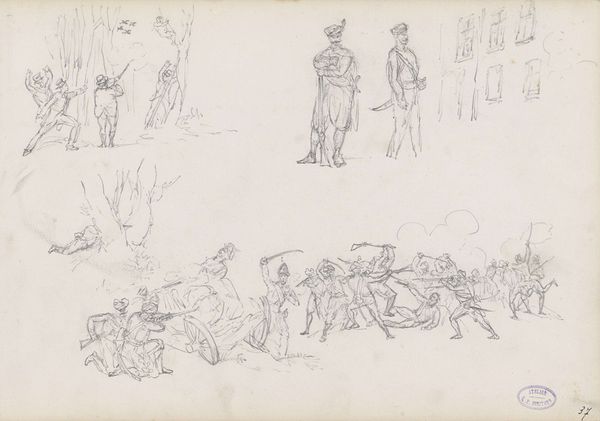![Men Drinking at a Table [verso] by George Overbury (Pop) Hart](/_next/image?url=https%3A%2F%2Fd2w8kbdekdi1gv.cloudfront.net%2FeyJidWNrZXQiOiAiYXJ0ZXJhLWltYWdlcy1idWNrZXQiLCAia2V5IjogImFydHdvcmtzLzQ5ZDVhYzk0LTQ5MDAtNGZlMi04NmQ1LWZkYzBhMDBkZmYxNC80OWQ1YWM5NC00OTAwLTRmZTItODZkNS1mZGMwYTAwZGZmMTRfZnVsbC5qcGciLCAiZWRpdHMiOiB7InJlc2l6ZSI6IHsid2lkdGgiOiAxOTIwLCAiaGVpZ2h0IjogMTkyMCwgImZpdCI6ICJpbnNpZGUifX19&w=1920&q=75)
drawing, pencil
#
drawing
#
figuration
#
pencil
#
genre-painting
Dimensions: sheet: 23.34 × 28.26 cm (9 3/16 × 11 1/8 in.)
Copyright: National Gallery of Art: CC0 1.0
Curator: Here we have Pop Hart’s “Men Drinking at a Table,” a pencil drawing from around 1927. What catches your eye first about it? Editor: Honestly, it feels like a casual snapshot, like walking in on a smoky card game in some dimly lit room. Very fleeting and intimate despite the somewhat impersonal rendering. Curator: Right, the hasty lines definitely add to that feeling. Consider how Hart often depicted working-class social life—scenes of labor and leisure were common subjects for him. The medium itself—pencil on paper—speaks to accessibility and perhaps the quick documentation of a transient moment. Editor: I am especially drawn to the dog resting below the table, he seems like the only one present not engaged with this group of men, looking off to somewhere only he can see. Almost like the eye of the artist in the picture, bearing witness to this fleeting moment in time. Curator: Exactly! This highlights an interesting tension between observation and participation that you pick up on, between this snapshot-style depiction of figures engaging in social life, while it subtly evokes something wider, beyond the image and into this wider society and labor outside this particular scene. Editor: Thinking about materials, the visible pencil strokes reveal the hand of the artist so directly—it feels unfiltered. It also makes me think of newspaper sketches and popular illustration, perhaps hinting at a deliberate association of art with everyday life. Curator: I agree. It's fascinating to consider how the materials and technique, often seen as “low” or preliminary, actually contribute significantly to the drawing's meaning. It collapses any implied sense of hierarchy between "high" art and accessible image-making for wider circulation. Editor: Absolutely. I see something poignant and quietly political here too. It captures the human connection found within those working class conditions—community, companionship in simple daily activities of people enjoying each other's presence, making even more valuable these scenes depicted with basic materials, an interesting tension with a timeless message. Curator: Precisely, and through this modest depiction, Pop Hart asks us to contemplate value: artistic value, social value, the value we place on labor and leisure, on different classes and conditions of living, revealing how we decide where value rests in art and society alike.
Comments
No comments
Be the first to comment and join the conversation on the ultimate creative platform.
